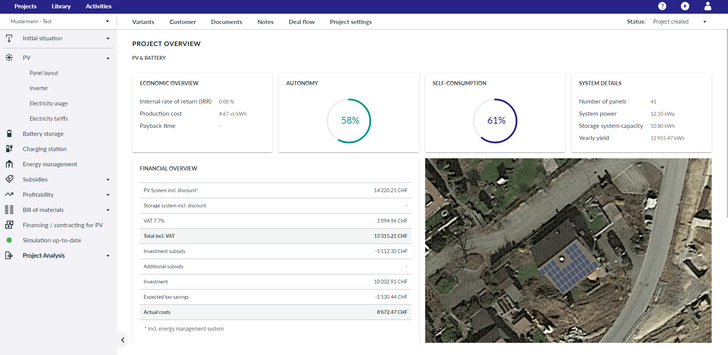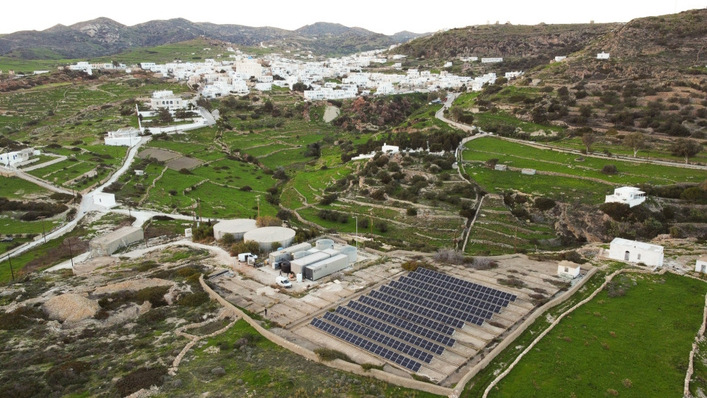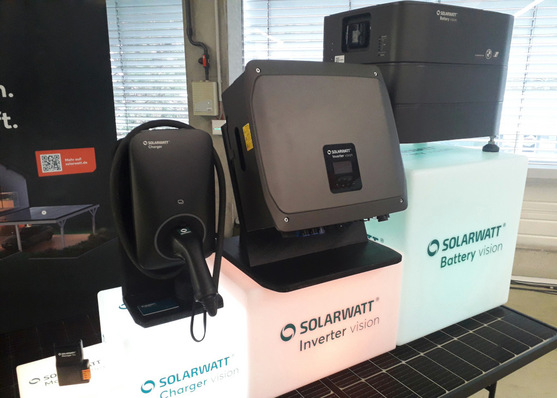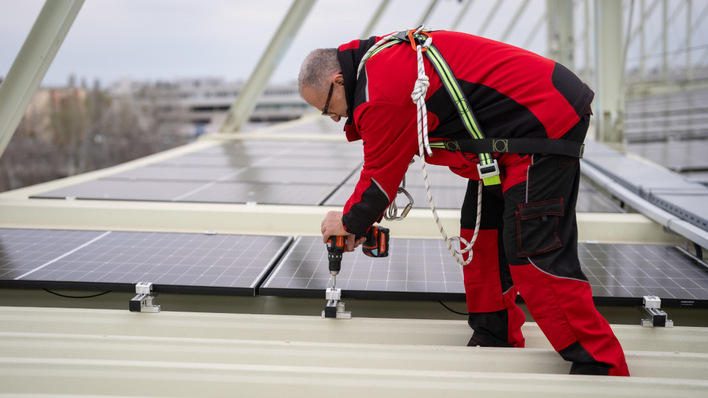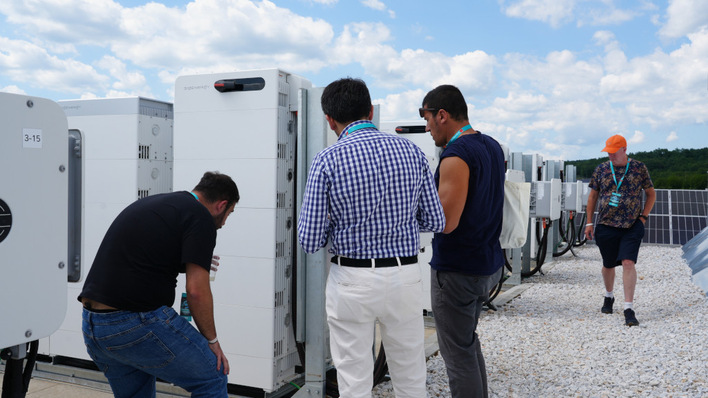Qualified customer contacts - that's what installers and energy suppliers alike want. In a growing photovoltaic market, customer demand is increasing. However, not every customer is so well informed that he or she immediately decides on an offer. It is not uncommon for the photovoltaic provider to have to invest a great deal of time and effort starting from the first customer contact to the confirmed order.
This does not mean that the process has to be at a standstill. Digitization and automation of the particularly time-consuming and cost-intensive consulting processes creates free space to devote to pre-qualified customers.
Matthias Wiget of Eturnity: The energy transition is far from complete
One example is the Eturnity solar calculator, which provides potential customers with an initial estimate of the photovoltaic system and electricity storage system they want. Since it can be integrated directly on the website of the installation company or utility company, it is also an ideal tool for online marketing. It is possible to integrate it in the company's own design, for an overall uniform image (white label).
Two important advantages that tipped the scales for Eike Johann, for example. He is a product manager at Home Energy and became aware of the solar calculator back in 2016. Since then, the calculator has been greatly developed and is now a central element of the customer journey and marketing activities at BKW for the Home Energy system, as well as at the subsidiary engytec AG. Well over 3,000 hits are recorded by the solar calculator every month on the Home Energy website alone. However, such figures are only possible with coordinated online marketing and the solar calculator creating recognizable added value for customers on the website.
Simple, but precise
Being able to get a simple, non-binding picture of the future solar installation is a strong added value for customers. What the end customers also appreciate very much, and what automatically saves time and effort for both the installers and consultants: Those who use the solar calculator get a feel for the costs and key figures of their personal photovoltaic system, because an initial indicative quote is provided at the same time. The solar calculator essentially takes on the role of the first filter. It differentiates between customers who would like to inform themselves informally and those who are planning a concrete project. It separates the wheat from the chaff.
The simulation itself focuses on two things: accuracy and comprehensibility. That's why it was important not to develop technical graphics, but to simulate in a simple way what the plant and its associated components cost, and what the end customer can ultimately save. This is solid data - presented in a simplified way. For this reason, all graphics have been tested by end customers for comprehensibility.
Looking at the big picture
Many installers and energy suppliers leave the paperwork behind and integrate the Eturnity solar expert as a complete package in addition to the solar calculator. This enables completely automated work from customer acquisition, consulting and planning to sales.
See also: New guideline for agrivoltaics
This ultimately makes the software an efficient tool for the design up to the bill of materials and the offer (cost calculation), which integrates additional functionalities for customer management. The solution supports the installer in showing his customer the opportunities of sector coupling at the building (electricity-heat-mobility).
Buying behavior is changing
It is a fact that solar customers are informing themselves online more frequently. The demand is increasing, interested parties want to compare different offers as quickly as possible. At the same time, sustainable and economic aspects are becoming more important. The only way to keep up with the market is to make this content easily available and understandable. For example, a calculator for CO2 reduction is integrated into the solar calculator. For many customers, this information is also very important.
The needs of solar customers are changing, as is the buying behavior in general. Rarely is only a photovoltaic system sold, but rather, sustainable overall solutions including: heating, hot water, e-mobility as well as electricity billing in apartment buildings. Smart Energy is the keyword.
Smart Energy as a customer experience
Competition in the solar industry is fierce, especially in Switzerland, where it is also very fragmented. Around 70 percent of solar companies employ fewer than ten people. This is where differentiating features are needed.
Competent advice and a convincing customer experience must be offered online and offline in equal measures and, above all, they must be convincing. For prospective customers to become Smart Energy customers, a customer experience is needed that plausibly and realistically demonstrates the advantages of such a large investment.
Experience with Home Energy, for example, shows this: To keep sales efforts to a minimum, a largely automated process for qualifying customer leads is necessary, with extra regard for data protection. From the initial research to requesting a quote, the work is increasingly outsourced to the customer, who obtains information online and creates their quotes independently. All of this, of course, only with their consent (opt-in). When it comes to on-site consulting, the customers’ knowledge and interest should have progressed to the point where the customer consultant can leave a binding offer.
Did you know? Distribution grids become more important
However, this is not the end of the story. This increase in efficiency in sales must be implemented in equal measure through the standardization and digitization of many process steps. Only then will this sales strategy take full effect.
Creating better framework conditions
The best way to do this is to focus on customer-friendliness when convincing customers of the benefits of solar energy. There is still a lot of work to be done on the part of the installers. This applies above all to the administration behind the implementation of a photovoltaic system; meaning, above all, the persuasion effort in the consultations right up to the final installation. The time required for this can easily amount from 12 to 20 hours and, therefore, represents a barrier to efficiency.
Companies need to have the courage to break new ground, the courage to seize the opportunities, and the willingness to recognize digitization as an opportunity. Not every company is equally capable of building up digital competencies quickly.
Communities in which partners work together and can optimally contribute their core competencies are efficient. From sales to service, exciting models are developed to make photovoltaics even more attractive for customers. (mfo)


